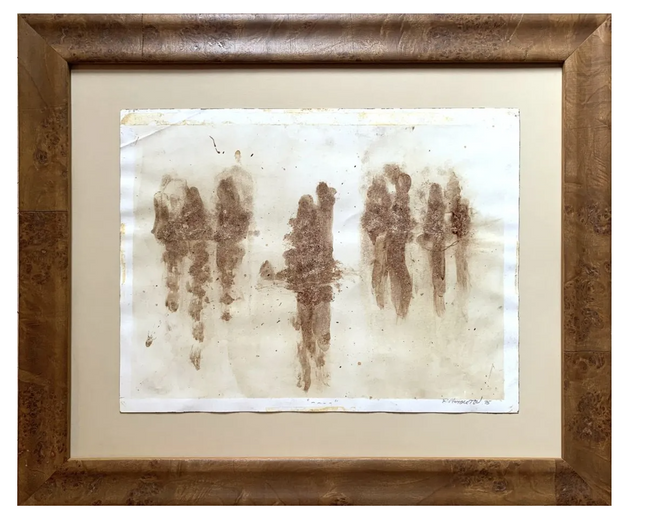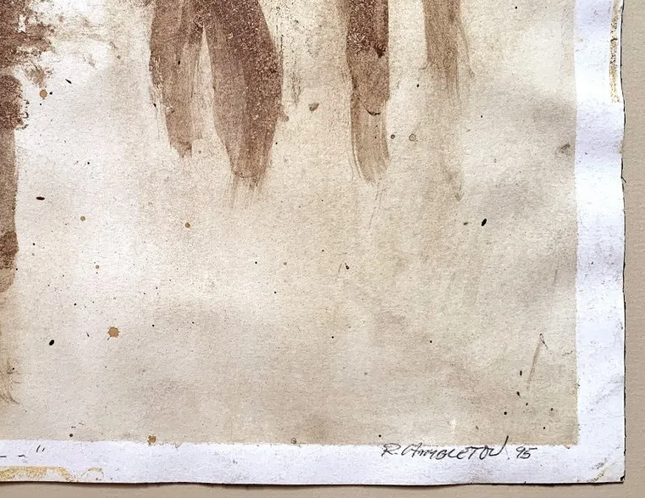
Richard Hambleton: The Enduring Legacy of a Street Art Icon
Hambleton's ascent in the art world was marked by his hauntingly evocative "Shadowman" paintings, silhouetted figures that appeared to leap out from the urban landscape, startling unsuspecting passersby. These figures, painted on the walls of Manhattan's Lower East Side, were more than mere graffiti; they were the embodiment of the city's psyche, darkness, and humanity. Unlike traditional graffiti or pop art that often conveyed messages through words or iconic imagery, Hambleton's work communicated through the visceral reaction it evoked, aligning him with the conceptual movement while maintaining his identity firmly in street art. Richard Hambleton, a Canadian-born artist, emerged as a pivotal figure in the street pop art and graffiti artwork movements. His legacy is particularly significant given his influence on the New York art scene of the 1980s. He is often mentioned in the same breath as his contemporaries, Jean-Michel Basquiat and Keith Haring, with whom he shared the spotlight as part of the trio that transitioned from street art to galleries, fundamentally altering the trajectory of contemporary art.
Richard Hambleton, a figure of intrigue and fascination, was one of the most influential graffiti artists in the history of pop, street, and graffiti art. Born in 1952 in Vancouver, Canada, Hambleton gained notoriety in the late 1970s and early 1980s with his chilling "Shadowman" series. These enigmatic, life-sized silhouettes were splashed across the buildings of New York City, startling unsuspecting passersby and leaving an indelible mark on the city's visual landscape. Often positioned as if they were on the move, these shadowy figures embodied the anxiety, excitement, and unpredictability of life in the city during that time. Hambleton's work, however, was more than a mere street spectacle. It was a commentary on the human condition, urban life's complexities, and the existence's transience. His art was also part of a broader cultural phenomenon, often called the "golden era of graffiti," including artists such as Jean-Michel Basquiat and Keith Haring. Despite his work's popularity and widespread recognition, Hambleton deliberately distanced himself from the mainstream art world, choosing to remain an enigmatic figure, thus adding to his allure. Another significant contribution from Hambleton to the world of street art was his "Image Mass Murder" series. This series, seen as a precursor to his "Shadowman" works, depicted chalk-outlined figures suggestive of crime scenes, complete with splashings of red paint symbolizing blood. The visceral impact of these works lay not only in their unsettling content but also in their unexpected and intrusive placement in public spaces. This artistic intervention transformed the urban landscape into a canvas, bringing art directly to the people and challenging traditional notions of where art belongs and how it should be experienced.
Richard Hambleton's Rise in the Art World
By the late 1980s, despite his growing popularity, Hambleton began to retreat from the public eye, struggling with drug addiction and homelessness. However, he never stopped creating. His later works, like the "Beautiful Paintings" series, were less overtly political but retained his signature grit and dynamism. These paintings, with their vibrant colors and abstract forms, were a stark departure from his earlier monochromatic works but demonstrated his continued commitment to pushing artistic boundaries. When Richard Hambleton passed away in 2017, he left behind a complex legacy. As a pioneer of graffiti art, he played a crucial role in the evolution of street art from a subversive act of resistance to a recognized and respected form of artistic expression. Despite his challenges, Hambleton remained dedicated to his craft, imbuing the urban landscape with mystery, beauty, and a touch of darkness. His work continues to inspire new generations of artists and reminds us of the transformative power of art in our everyday lives. Hambleton's ascent in the art world was marked by his hauntingly evocative "Shadowman" paintings, silhouetted figures that appeared to leap out from the urban landscape, startling unsuspecting passersby. These figures, painted on the walls of Manhattan's Lower East Side, were more than mere graffiti; they were the embodiment of the city's psyche, darkness, and humanity. Unlike traditional graffiti or pop art that often conveyed messages through words or iconic imagery, Hambleton's work communicated through the visceral reaction it evoked, aligning him with the conceptual movement while maintaining his identity firmly in street art.
Shadowman Richard Hambleton Documentary Movie
Shadowman is a documentary film that delves into the life and work of Richard Hambleton, the enigmatic and influential figure in the street pop art and graffiti movements. Released in 2017 and directed by Oren Jacoby, the film offers a retrospective look at Hambleton's impact on the art world, charting his rise to fame in the 1980s alongside other notable artists of the era. The documentary paints an intimate and often stark portrait of Hambleton, who, despite his early success and groundbreaking work, faced personal struggles with addiction and homelessness. Through interviews, archival footage, and shots of Hambleton's work, "Shadowman" captures the artist's raw and unfiltered life, reflecting the same intensity in his shadowy street figures. By bringing Hambleton's story to the screen, "Shadowman" has helped solidify the artist's legacy, bringing renewed attention to his contributions to street art and his role as a movement pioneer. The film also explores the fraught relationship between the commercial art world and street art, highlighting the challenges Hambleton faced in balancing his underground roots with mainstream success. "Shadowman" is not just a biographical account; it serves as a cultural commentary on the ephemeral nature of fame and the volatile dynamics of the art market. It challenges the audience to consider the value of art and the cost of creativity, making it an essential piece for understanding the history and the future of street pop art and graffiti artwork.


